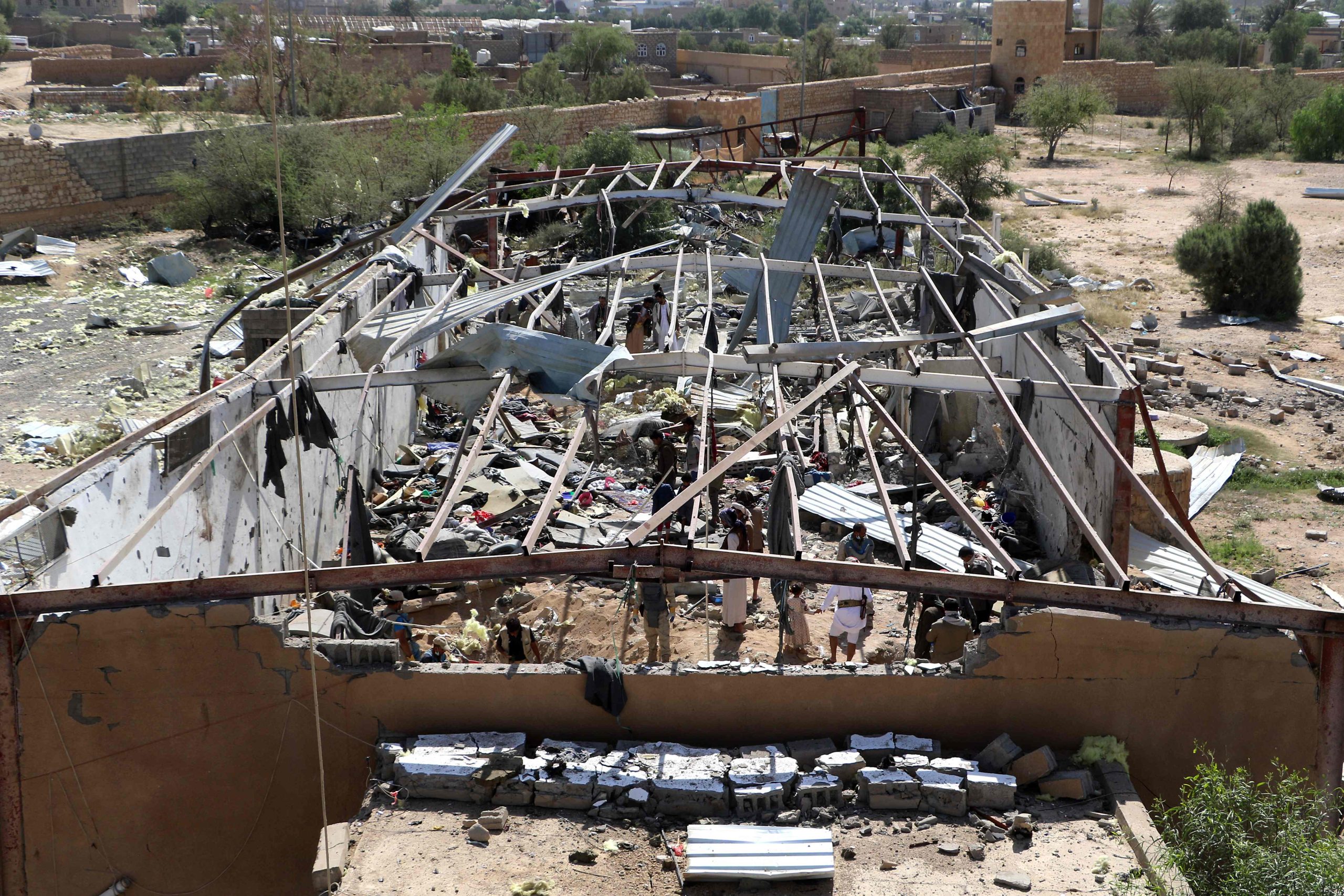Hitler died 80 years ago. The Fatidal Days of the End

By conceiving his megalomaniac projects to Nazi Germany, Albert Speer imagined them in the distant future, reduced to the skeleton. This thought, something strange for works that were still born, occurred to Adolf Hitler’s favorite architect when he contemplated the rubble of a hangar that had just been demolished, with his twisted irons to emerge from the ground. What would the buildings be projected by it to hundreds or even thousands of years, when they were transformed into ruins like the streets and temples of Rome and Pompeii? Would they maintain dignity? What would they say about the third Reich?
Speer called this the ‘theory of value as ruin’, which defined in the following terms: « The use of special materials, as well as the consideration of certain specific structural conditions, should allow the construction of buildings that, when the decay, after hundreds or thousands of years (we calculated), if they could look a little with their Roman models. » In fact, it didn’t take so long.
Reich’s iconic new Chancellery, the Nazi government headquarters, had been finished on January 7, 1939, two days before the scheduled delivery date, which left Hitler enchanted. On the outside, it was an imposing building, in a relatively sober and contained style; Inside, there were endless marble corridors and wood -lined offices.
In the spring of 1945, just over six years after the inauguration, this building was already unrecognizable. « Only the walls, reckless of numerous shrapnel, torn by huge projectile holes. The ceilings survived only partially, » recorded an Soviet officer who compared the place to one of Dante’s hell circles.
20 people in 14 square meters
Germany was on track. On March 11, heroes’ day, Hitler had suggested that he would never surrender. On March 16 he had issued the famous Decree Nero, which ordered the destruction of all infrastructure in Germany – something that Albert Speer, then armament minister, refused to comply. And on April 1, when everything was already lost, he had threatened, « Whoever does not fight until his strength will be prosperous and treated as a deserter. »
This catastrophe penalties came from afar. In the early 1930s, he had stated: « If we do not even triumph, we can only, when we sink, drag with us half of the world in this disaster. » In his mind, the collapse of the third Reich must be tragic, grand and troniturant as a Richard Wagner opera – more specifically as the Götterdämmerungor The Twilight of the Godsthe fourth and last part of the cycle The Nibelung Ring.
Adolf Hitler and his entourage took refuge in the bunker under the chancel on January 16, 1945. « The Führerbunker consisted of 18 compartments, all small, tight and uncomfortable, and a central corridor, » said Hugh Trevor-Roper in The last days of Hitler (Ed. War & Peace). “There could be no further contrast than that existing between the Egyptian vastness of the new Chancellery compartments (…) and those miserable underground bunnies in which a diminish court paid a less elaborate tribute, but also servile to Führer. The central corridor was divided into two by a partition. They were utilitarian offices, the bathroom and the guardhouse, the emergency telephone center and the machine room. After the partition was the saint of saints. If in the Chancellery the führer had a 400 square meter office designed to impress and intimidate visitors, their main workplace in bunker It was a 14-square-meter room where twenty people came to the maps around the maps. In a sense, it was what the grandeur of the greatness was given to the extreme.
The birthday
If Bunker’s walls spoke, they would have a lot to tell. Hitler’s last ten days of life were rich in extraordinary events. In addition to the meetings where Germany’s fate was sealed, they included a birthday, a wedding and a double suicide.
The leader’s 56th anniversary was signed on April 20. Initially, the Court was planned to withdraw to OberSalzberg, where was the ‘eagle’s nest’, Hitler’s idyllic refuge in the Alps. But time was not for celebrations.
The atmosphere in Bunker was not the most excited. “April 20, in the 56th anniversary of Hitler, the Nazi regime summit gathered for the last time: Göring, Goebbels, Himmler, Bormann, Speer, Ley, Ribbentrop and the rest of Wehmacht’s high commanders”, recaps biographer Joachim Fest. “A few days earlier, Eva Braun had also arrived unforeseenly, and everyone knew what her coming meant. However, artificial optimism still persisted in the bunker; Hitler was striking to revive him as they were greeted. He made some speeches, he encouraged, performed memories. Soviet army, whose advance was fast; it awarded them, gave them in their face.
The gallows and decorations (accompanied by an affectionate cuddly in the hair of young soldiers) – the Hitler version of the stick and the carrots – could occur simultaneously, by the way coinciding with the birthday of führer.
In the ultimate meeting with the leader, many of the high Nazi leaders had done by disguising their nervousness and impatience to leave the bunker and escape Berlin with life as soon as possible. Himmler went out almost directly to perform before Count Bernardotte (Swedish government representative) as Hitler’s successor, and trying to negotiate Germany’s surrender. « Poor Adolf, » said Eva Braun. « Everyone left you, everyone betrayed you. »
The Last Attack
The day after the birthday, April 21, « Hitler, who, in those days, directly commanded the movements of all battalions, ordered one last attack with all the troops available in Berlin, » Trevor-Roper wrote. It was already the final scent of the third Reich. Made in that lair ten meters deep, increasingly oblivious to reality, Hitler continued to move troops that already existed only in his head.
On April 22 he learned that his orders had not had any effect, because pure and simply there was no one to perform them. And then he exploded in a fury of unusual violence, accusing his generals of incompetence and betrayal.
The next day, 23, Speer was with him and found him calmer. The storm had looked – but only in the bunker: outside the bump of the bombs exploded was getting closer and closer.
“Hitler didn’t want to avoid devastation,” note Trevor-Roper. Since I went to the abyss, I would drag with it as much as I could. “In its last days,” the British historian continues, “although he did not suffer from any organic disease, Hitler was, according to the testimony of all who had contact with him, physically ruined. The incessant work, the loss of all freedom, the frustration of all the hopes he had, the drugs of Morell and, perhaps more than all, the violence and the disillusion They multiplied around it, reduced the powerful conqueror of the past to a trembling spectrum. All the witnesses of the last days agree when they describe the livid face, the smelling body, the curved hands, the rooted and hesitant voice and the cloud of exhaustion that covered their eyes. Universal, the constant fury, the alternation between optimism and despair. But it was still in possession of two characteristics of the old temperament. (…) Secondly, Hitler’s thirst for blood has not waved, and perhaps even increased by time and defeats. Although he was a physical fear of seeing blood, the idea of blood excited him and intoxicated him, just as destruction in all his forms seems to have appealed to the inherent nihilism of his spirit. ”
And speaking of blood, the Red Army’s siege of Berlin was closed on April 25-from there there was no way to flee.
Champagne and cyanide
There were already those who refer to Bunker, in those fateful days of late April, as a chart. And it is not a case for less. To the soldiers, in the face of circumstances, they had to wait, to throw the cards, and to become soaked, creating a more surrealistic scenario as Hitler’s aversion to the drink is known. One of the favorite conversation themes was the best form of suicide. Claustrophobia was palpable.
« Near the end of the war, the days when there was a lack of water, there was almost unbearable nauseating smell in particular by the antebunker, in which the vapors of the machines with diesel, who zombie, with an uninterrupted smell, with the disgusting smell of urine and human perspiration, » says Fest in the book in the book, « says Fest in the book in the book Hitler’s o_bunker (Ed. War & Peace). It was in this disgusting environment that Hitler and Eva Braun, whom they already called “the most unhappy woman in Germany”, married on April 29. Hitler’s personal secretary, Martin Bormann, and the faithful minister of advertising, Joseph Goebbels, were the witnesses. After the act, celebrated by a municipal councilman, drank champagne and prepared for the worst.
« The last inhabitants of Bunker had received cyanide capsules, but Hitler did not fully trust his effectiveness, although the day before he had one to kill one to kill his dog, Blondie, » said Richard J. Evans on The Third Reich in War (Editions 70), the last volume of its influential trilogy.
On the 30th, Hitler had lunch with his nutritionist and the two secretaries. “At three thirty in the afternoon Hitler withdrew to his studio with Eva Braun. After about 10 minutes, Hitler’s servant, Heinz Linge, opened the door accompanied by Bormann, and gave Hitler’s body on the sofa, with blood dripping from a hole in the right temple; poisoned. ”
As planned, the bodies were taken abroad and watered with gasoline previously requested for this purpose. Hitler had assisted what had happened to his friend Mussolini and their lover, whose corpses exposed with legs to the air and mocked in a square in Milan – and did not conceive that the same happened to him. The fire did their work and the corpses of Adolf and Eve were unrecognizable to the point of having to call the dentist to identify them.
It was the Hungarian philosopher György Lukács who noticed that when Nazism fell, thousands of Germans committed committed; When communism fell with the Berlin wall, the Germans celebrated. It seems impossible that, even on the verge of the collapse, already completely oblivious to the reality out there, Hitler continued to have so many and so faithful, some willing to give his own life for him. A lieutenant who had deprived the Goebbels family – the minister, the wife, and six children, who followed the leader to the tomb – summed up the situation like this: « I had the feeling that the whole world sank here, a world for which millions had struck and died – and their blood sacrifice had been absolutely useless. »







